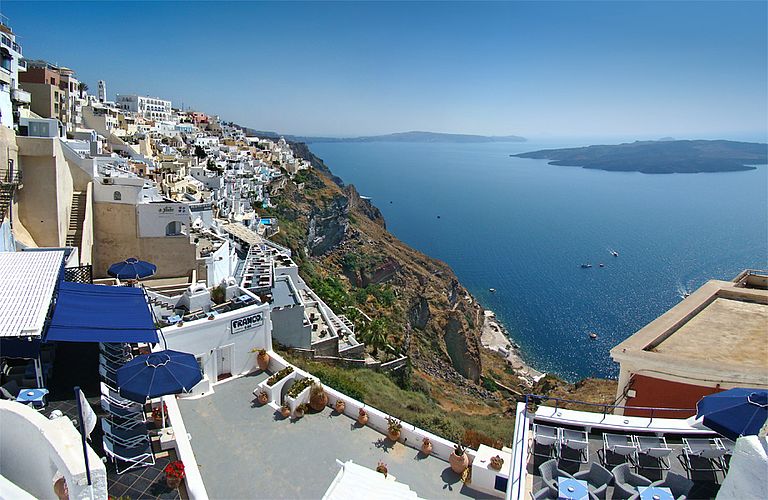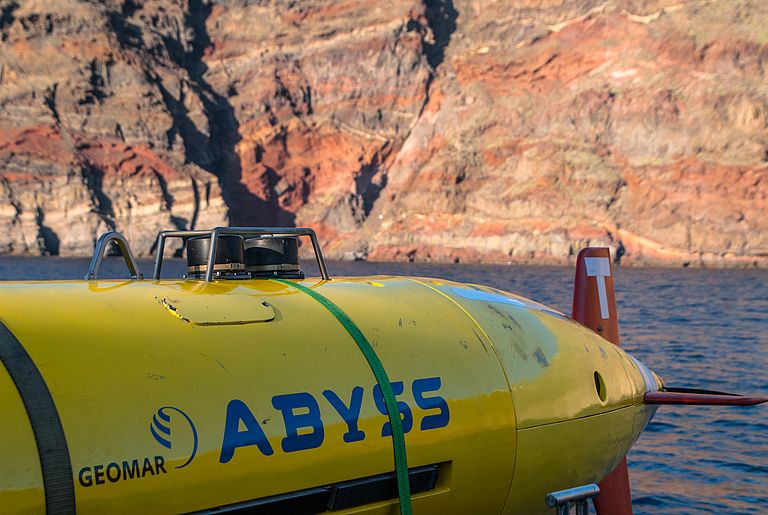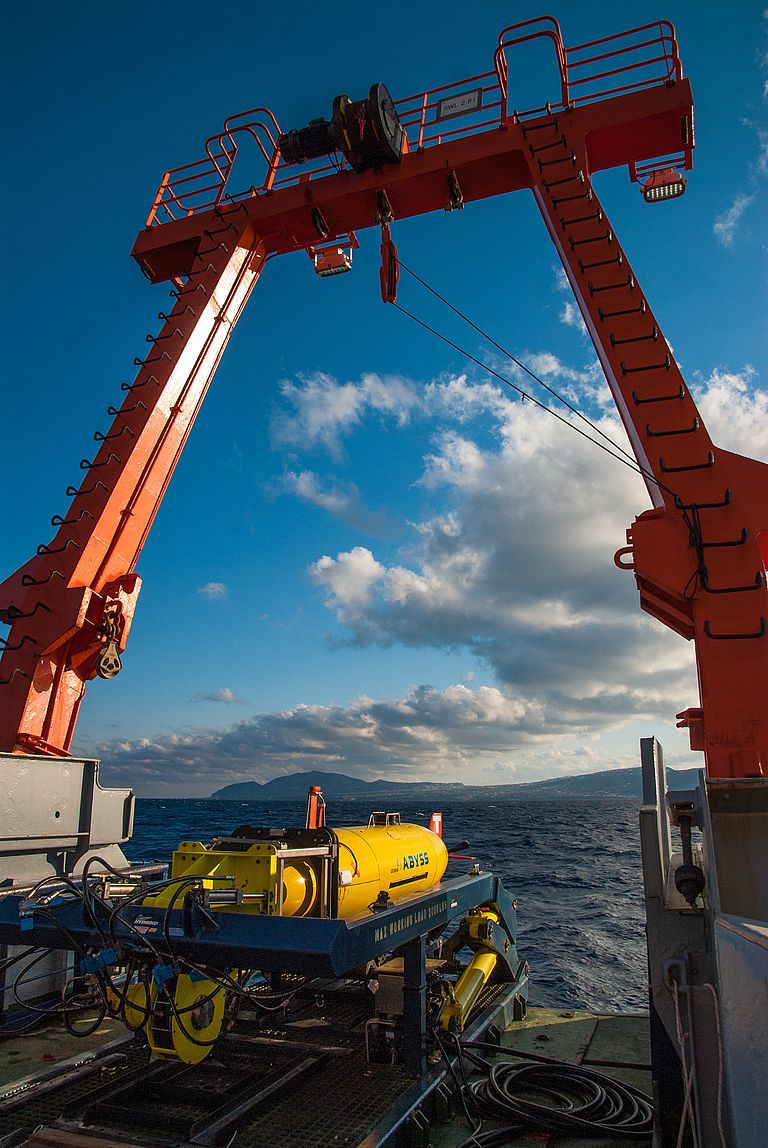How Explosive is the Aegean Sea?
German and Greek Scientists study volcanism of the Cyclades Islands
In Greek mythology Poseidon is the god of the seas. When he strikes the earth with his trident, he causes tremors and devastating waves. In that way the people of ancient Greece explained recurring natural catastrophes in the Aegean. Today, we better understand the origin of these natural hazards. With a speed of about four centimeters per year the African plate moves below the Aegean microplate. These seismic forces cause volcanism, earthquakes, and as a result of both, tsunamis. However, many details about the processes in the seabed are still unknown.
In order to close some of these knowledge gaps, the research vessel POSEIDON of the GEOMAR Helmholtz Center for Ocean Research Kiel (Germany) is currently operating around the southern Cyclades Islands. After a first successful expedition, the scientific crew changed in Heraklion (Crete) last weekend. Currently the POSEIDON is heading back to Santorini for the second cruise.
The researchers from Kiel study the volcanoes of the Cyclades Islands in cooperation with colleagues from the National and Kapodistrian University of Athens. Volcanic activity in the region of Santorini has been of great scientific interest, mostly because of the famous Minoan eruption of the late Bronze Age (∼3600 BP). To better understand the evolution of the volcanoes and find clues to possible future volcanic hazards, the German and Greek research team is studying their distant past.
Since March 8, the “POSEIDON” has been deploying the autonomous underwater vehicle (AUV) ABYSS in the waters east of Santorini, mapping nearly 100 square kilometres of the seabed in the search for signs of past tectonic activity and submarine eruptions. The goal is to understand the process of rifting of the crust and how this leads to active volcanism, major earthquakes, and widespread hydrothermal activity at the seafloor.
Prof. Mark Hannington (GEOMAR), chief scientist of this first expedition, notes “These processes have been acting on the region for millions of years, and some of the fine structures that we can now see in the AUV maps tell us a great deal about the possible future evolution of the volcanoes”. It is the first time that an active volcano in the Aegean Sea, like the Kolumbo, has been mapped at such a high resolution with an AUV.
During April, the second team led by Dr. Jörg Geldmacher uses the remotely operated deep-sea robot ROV PHOCA to collect samples of volcanic rocks from the steep underwater cliffs of Santorini to document the evolution of the magma intruded into the fault zones over the last million years. “The ROV will also be used to take thousands of photos for the first high-resolution photomosaics of the volcanos. With these data we can produce precise 3D-models of the seafloor”, Dr. Geldmacher explains.
In May, Dr. Armin Freundt (GEOMAR) will lead a final two-week expedition to take cores of deep-sea sediments containing a record of highly explosive eruptions that have occurred in the last 160,000 years. These samples will help to quantify the hazards from past eruptions as a measure for risk from future volcanic activity.
The research program is a cooperation with Prof. Dr. Paraskevi Nomikou of the National and Kapodistrian University of Athens who has been leading research at Santorini and Kolumbo since 2010. “Our partnership with the German research team is helping us to advance our knowledge of the tectonic and volcanic activity in the area”, says Nomikou.
High-res images:
In the past three weeks the POSEIDON has been deploying the autonomous underwater vehicle (AUV) ABYSS in the waters east of Santorini, mapping nearly 100 square kilometres of the seabed in the search for signs of past tectonic activity and submarine eruptions. Photo: Sven Petersen, GEOMAR
AUV ABYSS on RV POSEIDON. Photo: Emanuel Wenzlaff, GEOMAR
Contact:
Jan Steffen (GEOMAR, Communication & Media), Tel.: (+49) 0431 600-2811, presse(at)geomar.de





